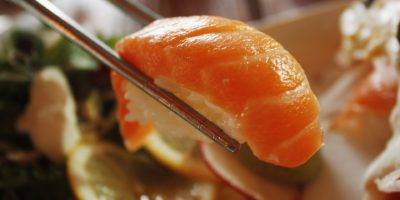20 Easter Food Traditions Around the World
In Christian traditions, Easter, a springtime holiday commemorates the resurrection of Jesus Christ. While the religious significance remains paramount, this global celebration is also a sensory feast. The vast tapestry of culinary pleasures on the Easter table eloquently echoes the complex tapestry of civilizations around the world.
The Easter cuisine is as different as the people who celebrate it with delicious lamb roasts signifying renewal in Western civilizations and fragrant spiced curries and exquisite desserts in India. The “hornazo” bursts with gastronomic joy in Spain, while delicately painted “kulich” bread and multicolored eggs demonstrate artistic prowess in Russia.
In Australia, “hot cross buns” embrace sweet and spicy scents, whereas South Africans enjoy delicious “pickled fish.”These Easter meal customs are more than simply a chance to connect with heritage, share joy, and instill a feeling of unity around the world. Here is a list of Easter food traditions around the World that lead to a unique and meaningful occasion.
1. Easter ham and deviled eggs (United States)

Photo by Lina Kivaka from Pexels
Easter ham and deviled eggs are popular Easter rituals in the United States for a variety of reasons. Ham was chosen for historical and practical reasons: historically, pork was slaughtered in the fall, and curing and smoking kept it throughout the winter. It was ready to eat by Easter, heralding the approach of spring.
Deviled eggs, on the other hand, are a sign of rebirth because they are made from plain hard-boiled eggs and transformed into a tasty treat. These meals also have a good flavor balance, with the sweetness of the ham complementing the acidic and flavorful quality of the deviled eggs. They work together to prepare a peaceful Easter lunch that embodies the spirit of renewal and cooperation valued in American society.
2. Easter Eggs (Global)
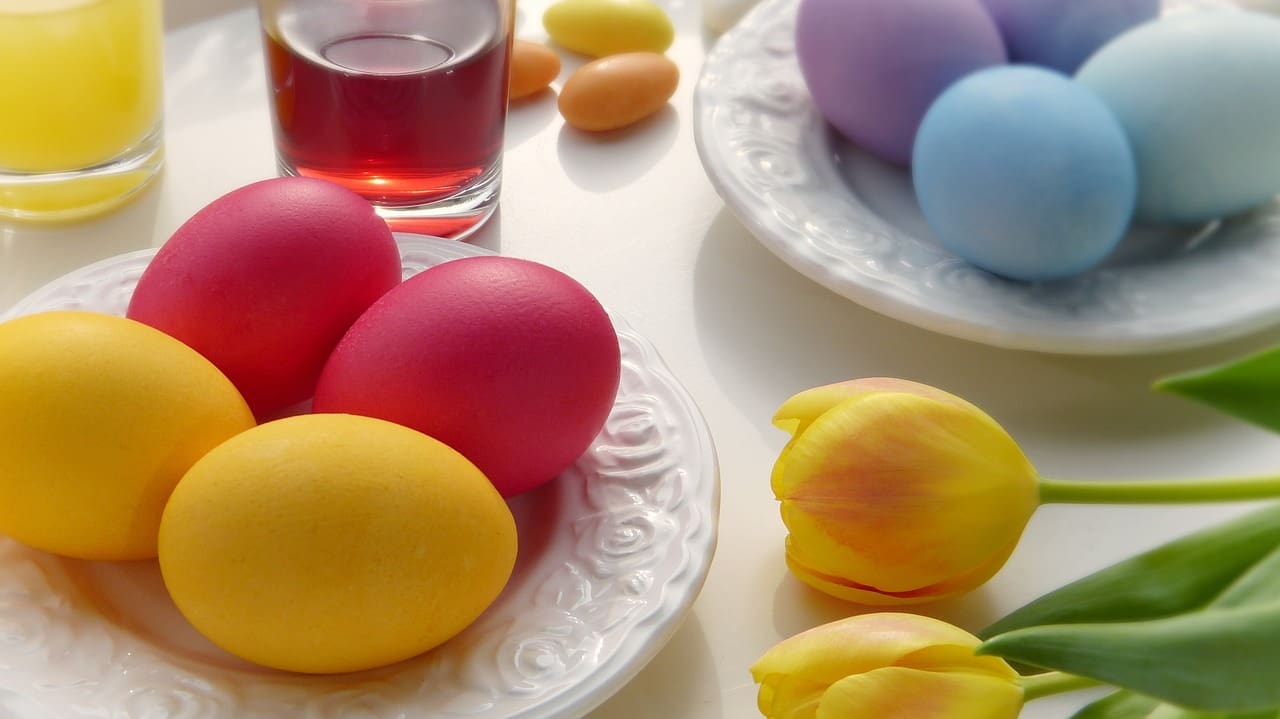
https://pixabay.com/photos/egg-easter-food-colour-background-3165476/
Easter eggs have long been associated with global Easter celebrations, spanning borders and cultures. These eggs represent rebirth, fertility, and Jesus’ resurrection, capturing the essence of Easter’s spiritual meaning. They are not only symbolic but also serve as a canvas for artistic expression. Communities all over the world participate in the age-old tradition of decorating eggs with vivid colors, intricate patterns, and profound motifs, resulting in a visual feast.
As individuals give and receive these gifts of goodwill, the exchange of Easter eggs develops a sense of solidarity, love, and generosity, maintaining the atmosphere of togetherness throughout this joyful season. They are beloved for their ability to capture the essence of Easter in a joyful and visually attractive way, from decorated eggs to chocolate delights.
3. Hot Cross Buns (Australia)

Photo by Karolina Grabowska from Pexels
For numerous reasons, Hot Cross Buns have a special place in Australian Easter traditions. These spiced, sweet buns with a cross on top represent Jesus’ crucifixion and the Christian significance of Easter. They are a beautiful reminder of the spiritual significance of the occasion.
Furthermore, the delicious blend of spices and dried fruits in Hot Cross Buns depicts the warmth and abundance of Australia’s autumn season during Easter. Sharing these buns with loved ones develops a sense of togetherness, making them a treasured emblem of family and community gatherings during this holiday season.
4. Roast Lamb (United Kingdom)

https://pixabay.com/photos/lamb-chops-chops-lamb-meat-food-1452304/
Roast lamb has been a time-honored Easter custom in the United Kingdom. For starters, it represents the Lamb of God, which ties into the religious significance of Easter. The ritual of lamb extends back to the Jewish Passover supper and was embraced by Christianity, showing the continuity of faith.
Furthermore, Easter occurs in the spring, when lamb is at its tenderest and most flavorful, making it a perfect option for the bounty of the season. Roasting lamb draws families together because it requires a collaborative effort and serves as a focus for Easter Sunday celebrations, strengthening the attitude of cooperation and celebration.
5. “Hornazo” (Spain)

Juan Fernández (JuanJaén), CC BY-SA 2.0, via Wikimedia Commons
The “hornazo” is a beloved Easter tradition in Spain with a long history. This packed pastry captures both the cultural and culinary spirit of the event. Its name, “hornazo,” is said to be derived from the words “horno” (oven) and “hacer” (to make), stressing the act of baking and sharing.
The pastry is often a dough packed with a variety of items such as cured sausages, hard-boiled eggs, and, on occasion, ham. This rich and savory dessert exemplifies the celebratory abundance of Easter, while the flavor combination delivers a distinct and delightful experience. Sharing hornazo with friends and family fosters a sense of camaraderie and cultural heritage during this festive season in Spain.
6. “Magiritsa” (Greece)

Lemur12, Public domain, via Wikimedia Commons
Easter is a deeply cherished event in Greece, and culinary traditions play an important part. “Magiritsa,” a substantial soup cooked with lamb offal, greens like dandelion or lettuce, and seasoned with lemon and dill, is one of the highlight dishes. Its unusual ingredient mix reflects the transition from Lent’s austerity to Easter’s joyous richness.
Lamb is another highlight, often roasted on a spit or in the oven to represent Christ’s sacrifice and the pleasure of rebirth. These culinary traditions are not only tasty, but they also bear witness to Easter’s deep cultural and religious significance in Greece, generating a sense of unity and joy.
7. “Gâteau de Pâques” (France)
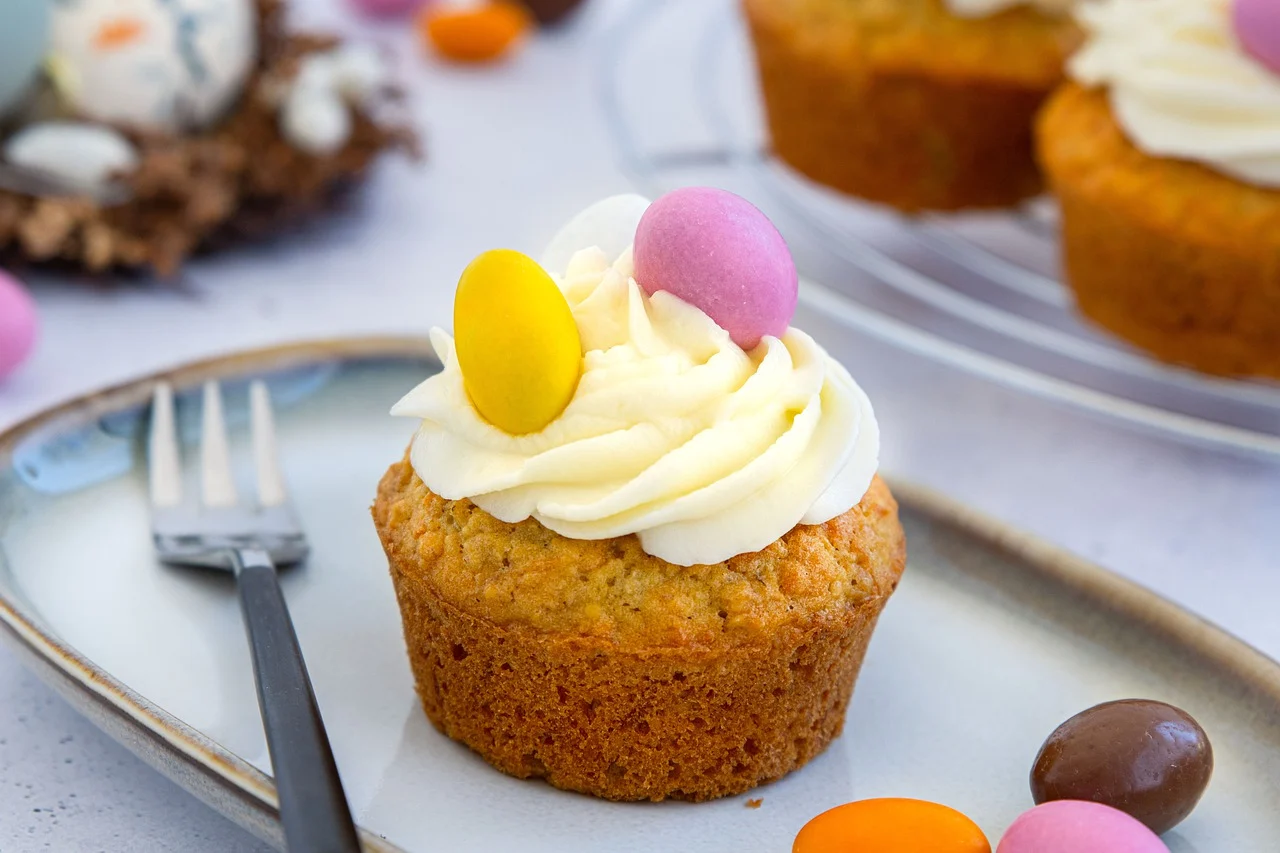
https://pixabay.com/photos/muffin-eggs-cake-pastries-easter-7870491/
The “gâteau de Pâques,” a thick and creamy almond cake, is a delicious and luxurious Easter tradition in France. This delicious dish represents the excitement and festivity of Easter. The cake’s almond flavor depicts the essence of spring, and its airy, fluffy texture represents the holiday’s regeneration.
The cake is frequently topped with colorful decorations, such as sugar-coated almonds and figurines, to provide an artistic touch to the celebration. Sharing “gâteau de Pâques” with family and friends is a beautiful way to commemorate the occasion, instilling the spirit of togetherness and the sweetness of the season into French Easter celebrations.
8. “Påskbord” (Sweden)

Photo by Igor Ovsyannykov from Pexels
Easter in Sweden is connected with the “Påskbord,” an enormous Easter buffet spread featuring a wide variety of traditional delicacies. This smorgasbord includes herring in a variety of delicious sauces, cured salmon, gravlax, and a selection of pickled vegetables. Eggs, as a sign of rebirth, take center stage and are cooked in a variety of ways, including deviled eggs and egg halves filled with caviar.
In addition, the “Jansson’s Temptation,” a creamy potato and anchovy casserole, is frequently served. The “Påskbord” is a gastronomic treat that brings family and friends together to celebrate the entrance of spring and the happy spirit of Easter in Sweden.
9. “Babka wielkanocna” (Poland)
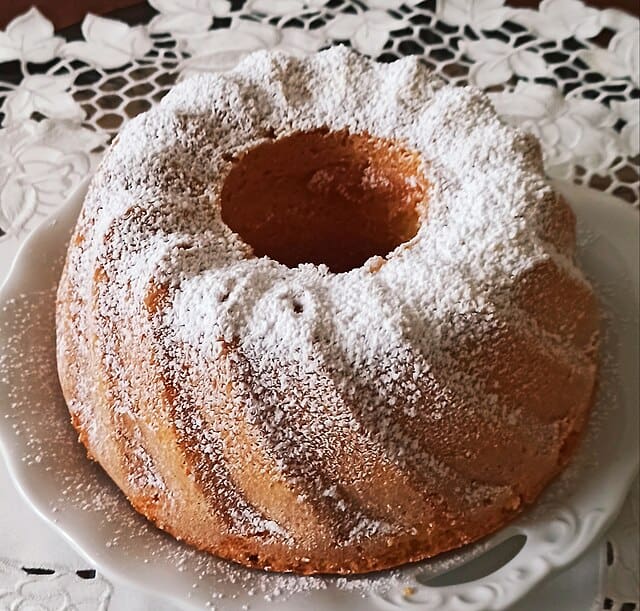
Aw58, CC BY-SA 4.0, via Wikimedia Commons
Easter is synonymous in Poland with “Babka wielkanocna,” a traditional Easter cake. This thick and delicious cake represents the season’s wealth and delight. Babka wielkanocna is produced using a brioche-like dough that is enriched with eggs, butter, and raisins. It’s sometimes flavored with citrus zest and spices, which gives it a pleasant scent.
Typically, the cake is baked in a beautiful, fluted form, yielding an ornate design. It’s generally drizzled with white icing and topped with colorful sprinkles once it’s cooled. During Easter celebrations, sharing slices of Babka wielkanocna is a treasured custom that symbolizes togetherness and the beauty of the festival.
10. Easter lamb and “Osterbrot” (Germany)

https://pixabay.com/photos/italian-easter-bread-easter-bread-4658085/
Easter is a time for delectable culinary traditions in Germany, with Easter lamb and “Osterbrot” taking center stage. Easter lamb, sometimes grilled with aromatic herbs, represents God’s sacrifice of the Lamb and Jesus’ resurrection. This delicate and savory dish brings families together.
“Osterbrot,” a sweet bread loaded with raisins, candied fruits, and almonds and typically cooked in the shape of lambs or crosses, rounds out the meal. This bread symbolizes the excitement of Easter and the coming of spring. Germans value not just the rich flavors of these foods, but also the ritual of eating them with family and friends over the Easter season.
11. “kulich” and “pysanky” (Russia)
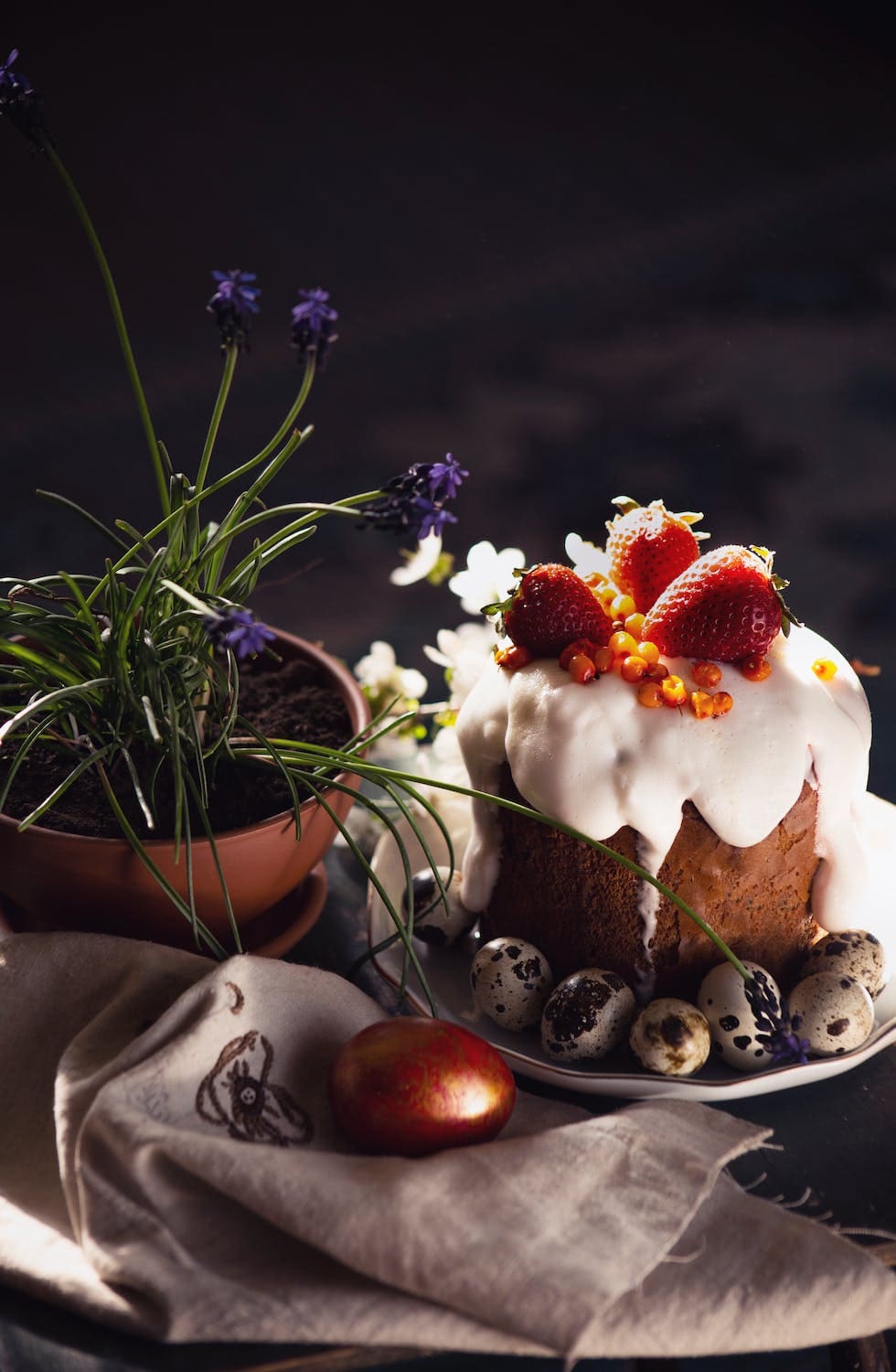
Photo by Яна Горбунова from Pexels
Easter is a significant custom in Russia, and two staples of the Easter feast are “kulich” and painted eggs. “Kulich” is a sweet, cylindrical bread baked with ingredients such as eggs, butter, candied fruits, and spices, resulting in a delectable and aromatic treat. The bread is often tall and cylindrical in shape, representing the resurrection.
It’s usually topped with white frosting and colorful sprinkles. The intricately decorated eggs known as “pysanky” are also significant. These eggs are hand-painted with elaborate motifs and symbols, each conveying a different narrative. In Russia, both “kulich” and “pysanky” represent rebirth, renewal, and the spiritual importance of Easter.
12. “Capirotada” (Mexico)

Alejandro Lugo, CC BY-SA 4.0, via Wikimedia Commons
“Capirotada” is a beloved Mexican culinary tradition associated with Semana Santa, the Holy Week preceding Easter. This one-of-a-kind bread pudding represents both the religious and cultural sides of the celebration. Capirotada is a wonderful blend of sweet and savory flavors made comprised of layers of stale bread, cheese, almonds, and dried fruits bound together by a cinnamon and clove-infused sweet syrup.
Its ingredients are symbolic, with the bread representing Christ’s body and the syrup signifying Christ’s blood. The layers represent Jesus’ passion. Sharing Capirotada is a heartfelt custom that marries Mexican tastes with the spiritual significance of Easter, resulting in a meaningful and delightful experience.
13. “Bacalhau” (Brazil)
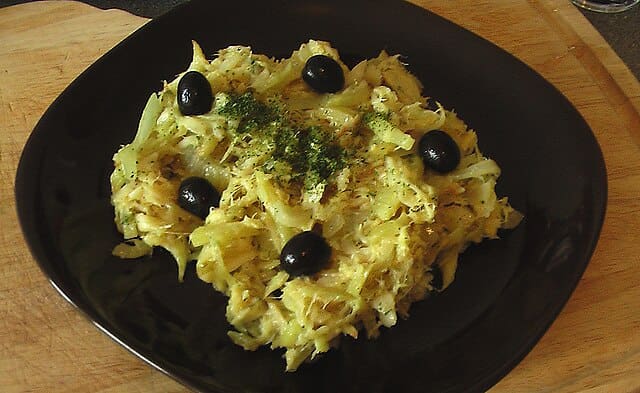
Fpenteado at en.wikipedia, CC BY-SA 3.0, via Wikimedia Commons
Easter is celebrated in Brazil with a distinct blend of cultural and gastronomic traditions, and “Bacalhau,” or salted codfish is a staple of the Easter table. This meal has historical roots that can be traced back to the Portuguese influence on Brazilian cuisine. Bacalhau is made in a variety of ways, the most common of which is a robust stew called “Bacalhau à Gomes de Sá,” which blends salted codfish with potatoes, onions, and olives in a savory olive oil and garlic sauce.
The Easter practice of eating Bacalhau emphasizes the historical and cultural ties between Brazil and Portugal, while simultaneously embodying the Catholic tradition of fasting from meat throughout Lent and celebrating Easter with a plentiful, savory feast.
14. Roast leg of lamb (Ireland)

https://pixabay.com/photos/barbecue-barbeque-bbq-beef-1239434/
Easter is a time for cherished traditions in Ireland, and the traditional Easter feast of roast leg of lamb has a special place in the hearts of Irish families. The lamb represents sacrifice and renewal, and it corresponds wonderfully with the Easter story making it a meaningful choice.
Roasting a leg of lamb to perfection with herbs and seasonal vegetables is a culinary technique that brings out the meat’s tenderness and succulence. The dish is not only a spiritual celebration of the occasion but also an opportunity for loved ones to congregate, share a hearty meal, and develop a sense of togetherness during this crucial period in Irish culture.
15. “Påskeegg” (Norway)

Jan Kameníček, Public domain, via Wikimedia Commons
Easter in Norway is a happy season marked by traditions that are both distinctive and shared with the rest of the world. During the event, “Påskeegg,” or chocolate Easter eggs, take center stage. These sweets are similar to Easter eggs found in many nations, with one major difference: they are often larger and more elaborately adorned.
“Påskeegg,” made of high-quality chocolate and loaded with a variety of surprises ranging from candy to small toys, is a source of delight for both children and adults. Norwegian Easter also includes a heritage of outdoor activities like skiing and cabin excursions, which adds an element of adventure and unity to the celebration.
16. “Kakanin” (Philippines)
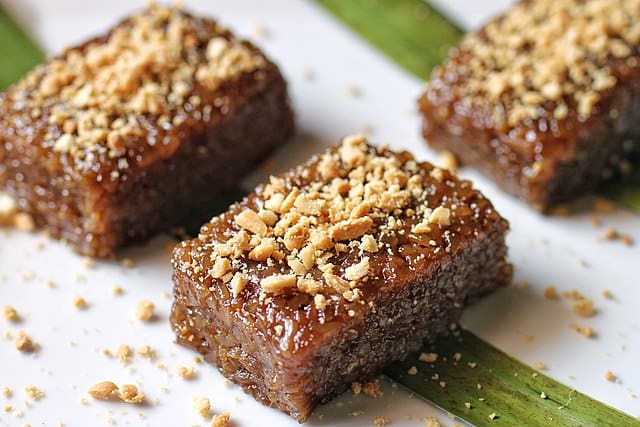
Herbertkikoy, CC BY-SA 4.0, via Wikimedia Commons
Easter is celebrated in the Philippines with a rich and diverse gastronomic heritage, and one delectable highlight is “Kakanin.” This popular Easter confection is made with glutinous rice and coconut milk, resulting in a lovely and slightly sticky treat. It is frequently seasoned with pandan leaves, purple yam (ube), or sweetened coconut, which adds beautiful colors and distinct flavors.
“Kakanin” comes in a variety of sizes and shapes, ranging from colorful squares to neatly wrapped packets, and is a monument to Filipino artistry. During the Easter season, the dessert is shared with families and communities, reflecting the pleasure of rebirth and the cultural richness of Filipino Easter celebrations.
17. Lamb (Argentina)

https://pixabay.com/photos/patagonia-roasted-lamb-2362522/
In Argentina, Easter is a time for culinary luxury, with the highlight of the Easter feast being a delicious lamb roasted over an open fire. Lamb’s significance in Jewish history stretches back to the Passover dinner, representing sacrifice and renewal.
This tradition has been perfectly interwoven in Argentina’s wide landscapes, with the smokey fragrance of lamb cooking over wood fires becoming a characteristic of Easter celebrations. The soft, delicious meat is seasoned with natural herbs and spices and is a wonderful representation of Argentine hospitality.
18. “Doro Wat” (Ethiopia)
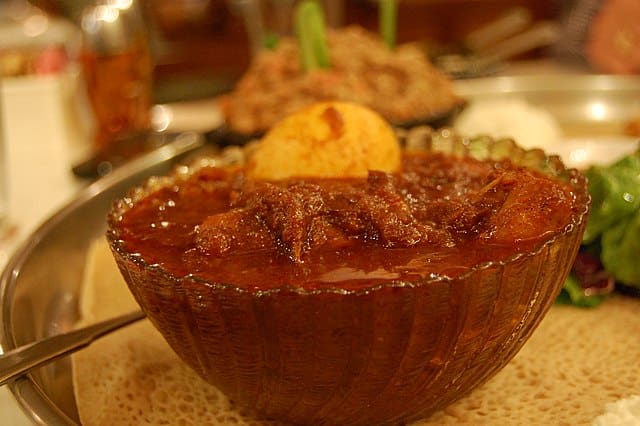
stu_spivack, CC BY-SA 2.0, via Wikimedia Commons
Easter, or “Fasika,” is celebrated in Ethiopia with great religious devotion and a distinct gastronomic heritage. “Doro Wat,” a fiery chicken stew, is one of the most well-known foods during this holiday. Doro Wat encapsulates the complex flavors and smells of Ethiopian cuisine, made with slow-cooked chicken pieces in a rich, hot sauce of berbere spice, onions, and garlic.
This dish, traditionally eaten with injera, a sourdough flatbread, represents the excitement of Easter and the social spirit that characterizes the occasion. Families and communities get together to enjoy Doro Wat, strengthening their friendships and honoring Christ’s resurrection with a delicious and comforting feast.
19. Matzah, Bitter herbs, and Haroset (Israel)
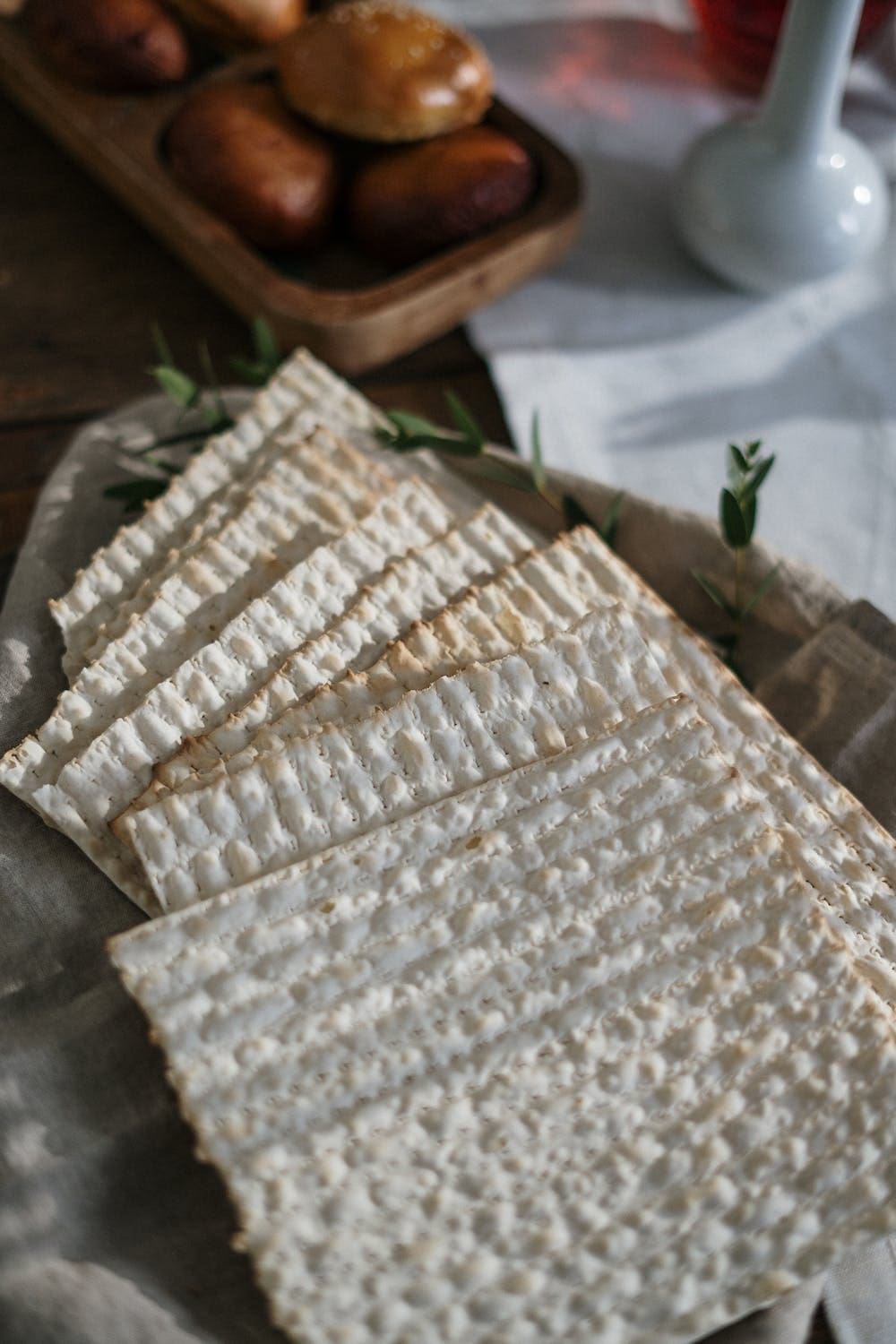
Photo by cottonbro studio from Pexels
In Israel, the Jewish holiday of Passover, which often coincides with Easter, has great religious and cultural significance. Jewish households observe dietary restrictions during this week-long holiday, refraining from leavened bread and goods. Matzah, or unleavened bread, is a key component of Passover, representing the Israelites’ hasty exodus from Egypt.
On the Seder plate, bitter herbs such as horseradish and haroset, a sweet mixture of fruit, nuts, and wine, are presented representing the bitterness of slavery and the sweetness of emancipation. Passover is a time of reflection, remembrance, and tradition for the people of Israel, strengthening the profound ties between faith, history, and family.
20. “Pinca” (Croatia)
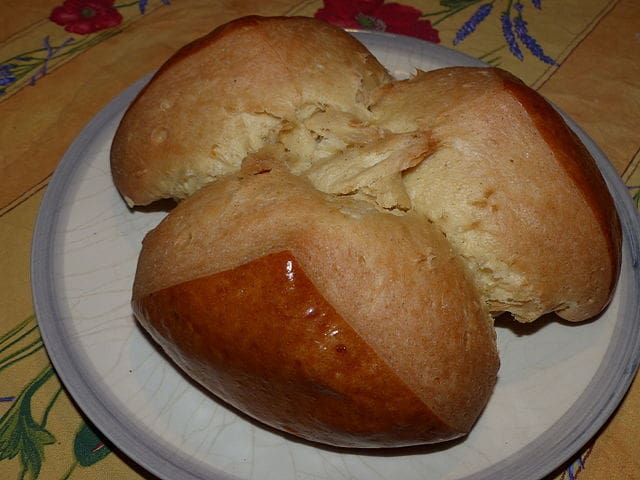
Dr. Bernd Gross, CC BY-SA 4.0, via Wikimedia Commons
Easter is celebrated in Croatia with a lovely blend of tradition and flavor. “Pinca” is a popular Easter bread that is sweet and aromatic, containing eggs, citrus zest, and sometimes raisins. Its elaborate decorations on top express the spirit of regeneration, and it’s sometimes baked in various shapes, such as a dove or a cross, to symbolize the resurrection. In addition, lamb dishes such as roasted or braised lamb are popular. In the Christian religion, the lamb represents sacrifice and renewal.
Easter food customs around the world reflect the holiday’s global reach in a diverse and tasty way. There is plenty for everyone to enjoy during this holiday season, from sweet sweets like chocolate eggs and hot cross buns to savory entrees like roast lamb and ham. These customs are more than simply a method to commemorate Easter; they are also a way to reconnect with loved ones and share cultural heritage. Easter food customs provide a special touch to this special holiday, whether you are meeting with family for a traditional Easter Sunday lunch or simply enjoying a sweet treat.
Planning a trip to Paris ? Get ready !
These are Amazon’s best-selling travel products that you may need for coming to Paris.
Bookstore
- The best travel book : Rick Steves – Paris 2023 – Learn more here
- Fodor’s Paris 2024 – Learn more here
Travel Gear
- Venture Pal Lightweight Backpack – Learn more here
- Samsonite Winfield 2 28″ Luggage – Learn more here
- Swig Savvy’s Stainless Steel Insulated Water Bottle – Learn more here
Check Amazon’s best-seller list for the most popular travel accessories. We sometimes read this list just to find out what new travel products people are buying.




